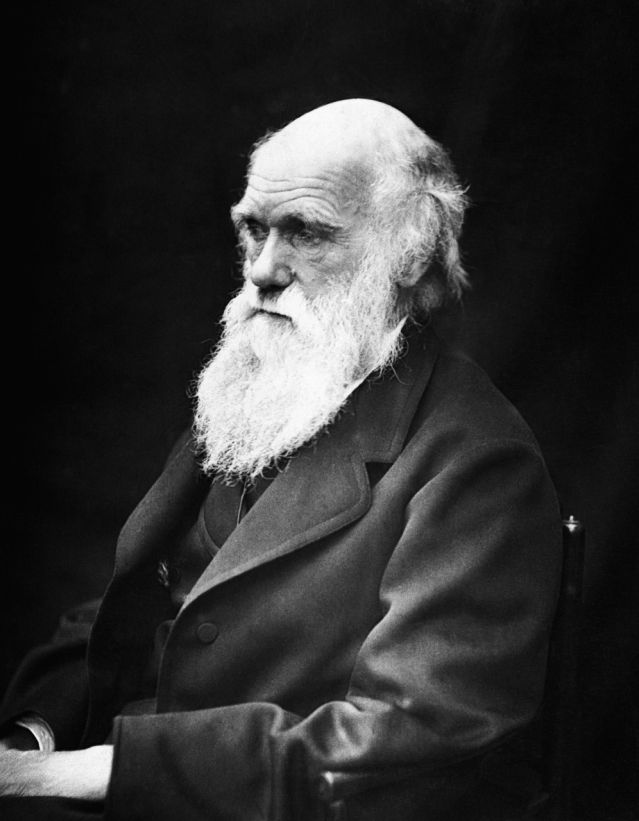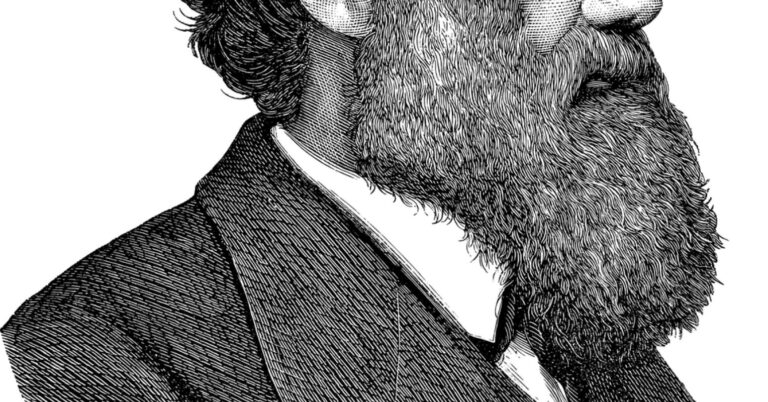Trying to understand human behavior (a basic feature of our species, shaped by natural selection) without understanding evolutionary principles would be like trying to understand the details of a car without realizing that its purpose is to locomote. As several scholars, including myself, have maintained over the years, understanding evolution is simply essential for a full take on the human behavioral experience (see Evolutionary Psychology 101).

Source: wikiimages/pixabay
In an effort to help document some critical junctures that have shaped this area of inquiry, here is a brief* chronology of the field.
1859: Charles Darwin publishes On the Origins of the Species—showing the process of natural selection, evolution’s primary process when it comes to the nature of life, to the world.
1872: Darwin publishes The Expression of Emotion of Man and Animals. Without question, his ideas in this book fully represent an evolutionary approach to human psychology. With Darwin’s publications on evolutionary processes applied to psychological states, the field of evolutionary psychology was born.
1953: Niko Tinbergen and other behavioral scientists advance the Ethology movement, applying evolutionary principles, in a broad manner, to issues of animal behavior.
1964: William Hamilton demarcates the ideas of “inclusive fitness” and “kin-selected altruism” to help explain how evolutionary principles can shed light on prosocial (other-oriented) behavior.
Early 1970s: Robert Trivers published several seminal theoretical articles on the importance of parental investment in mating systems, reciprocal altruism, and parent/offspring conflict. These articles set the stage for the large-scale application of evolutionary principles to various facets of the behavioral experience.
1975: E. O. Wilson, of Harvard, publishes the book Sociobiology, about how evolution has shaped social behaviors across various species—our own species included. Not everyone loved the idea. But wow, this book pushed the needle in a big way.
1976: Oxford biologist Richard Dawkins published the groundbreaking book The Selfish Gene, which essentially presents Darwin’s ideas for a relatively modern audience. The book focuses on the evolution of behavior in particular.
1980s-1990s: The Harvard Connection
As a then-junior faculty member, evolutionary psychologist David Buss (now at the University of Texas) took a position at Harvard University, which, as history would come to tell us, served as a hotbed for the cultivation of evolutionary behavioral science.
While not there at exactly the same time, evolutionary pugilists Steve Pinker (who was still in the early stages of applying evolutionary concepts in his work at that point) and Robert Trivers held positions at Harvard at nearly the same time. And importantly, Martin Daly and Margo Wilson held one-year sabbatical positions at Harvard while Buss was there, partly shaping this burgeoning epicenter of evolutionary thinking.
Concurrently, two thinkers who would eventually become major scholars in the field, Leda Cosmides and the late-great John Tooby, called Harvard home at the time. They both obtained undergraduate and graduate degrees while there and they learned about this budding young evolutionary thinker, David Buss, along the way.
Cosmides and Tooby later went on to marry and to, collaboratively, launch the Center for Evolutionary Psychology at UC Santa Barbara, which still operates as an internationally renowned hub of evolutionary scholarship to this day. They also introduced Buss to legendary Harvard evolutionary anthropologist, Irv Devore, during this time period. The connections and ideas regarding evolution and the human experience were percolating at full-force.
Evolutionary Psychology Essential Reads
As Buss (2023) stated, this work by Cosmides and Tooby set the stage for the “develop[ment of] the conceptual foundations of evolutionary psychology, merging cognitive (science)/information processing with evolutionary theory.”
Buss remained close friends with both Cosmides and Tooby. The effects all these scholars had on the advancement of evolutionary psychology have been nothing short of huge over the years.
Several other major evolutionists, such as E. O. Wilson, Ernst Mayr, and Paul Bingham, also called Harvard home during this general era.
1987-1990: Building the Foundations of Evolutionary Psychology
Between 1987 and 1990, at the Center for Advanced Study in the Behavioral Sciences at Stanford, David Buss led an intellectual initiative designed to really demarcate the foundational concepts of evolutionary psychology. As part of this process, he built an all-star team of scholars, including Leda Cosmides, John Tooby, Martin Daly, and Margo Wilson. The group spent the better part of a year putting together a draft of a would-be textbook in the field of evolutionary psychology. At the end of the day, everyone went back to their full-time gigs at their respective universities, and the book never was completed. But the seeds of so many evolutionary projects that would become foundational in the field were sown.
1989: The Launching of the Human Behavior and Evolution Society (HBES)
Another landmark event for the field is found in the formation of the world’s first (and currently largest) intellectual society dedicated to the study of human behavior and evolution (the Human Behavior and Evolution Society; HBES).
With roots in the work of scholars who were stationed at Michigan at the time (including Bill Irons and Napoleon Chagnon at Northwestern and David Buss and Randy Nesse at the University of Michigan), the formal launching of HBES, with renowned evolutionary biologist, William Hamilton, as founding president and founder of the field of Darwinian Medicine, Randy Nesse playing a primary role in the formalization of the organization, was an instant hit. Among the invited speakers at this first meeting of the society were Richard Dawkins and William Hamilton. Highly revered evolutionary biologist George Williams was also a regular presence at the early meetings of HBES. To put things into perspective, in the field of evolutionary studies, these folks are nothing short of icons and the society was well on its way to making a splash right out of the gate.
1992: Jerome Barkow, Cosmides, and Tooby published The Adapted Mind, which would quickly become a classic in the field, paving the way for how the field of evolutionary psychology would proceed.
1992: Then-graduate-student Margie Profet publishes (partly in The Adapted Mind) stunning work showing that pregnancy sickness, a basic feature of the broader human experience, can best be understood within an evolutionary framework. This piece paved the way for understanding all kinds of human phenomena from an evolutionary perspective.
1994: Buss publishes the first edition of The Evolution of Desire—an insightful treatise on how evolutionary principles shed light on all facets of the human mating experience. The influence of this book on thinking within the behavioral sciences has been profound and has proven as relevant to all kinds of human issues.
1994: Randy Nesse coins the term “Darwinian Psychiatry” and shows how powerfully evolutionary principles can be applied in the field of psychiatry specifically, as well as in medicine in general. He also coined the term “Darwinian Medicine” and has been a stalwart champion of integrating Darwinian ideas into all branches of medical science and practice.
1998: David Sloan Wilson, largely in an attempt to shed light on prosociality (the helping of others), posits the idea of multi-level selection, which underscores the fact that evolutionary forces are constantly working at multiple levels regarding the evolution of organisms—humans included.
1998: Buss publishes the first textbook titled Evolutionary Psychology. In a sense, the field (which had been brewing and steeping and churning for well over a century) was born.
2009 (or so): Scholars in all kinds of fields (education, politics, mental health, nutrition, and more) start the large-scale application of evolution to address a number of human issues. This field sits under the umbrella of Applied Evolutionary Psychology, and it even has its own society (the Applied Evolutionary Psychology Society). Leaders of this initiative included the likes of Daniel Kruger, Nicholas Armenti, and Daniel Glass, along with several other key thinkers.
2009 (or so): A similar group of scholars works to integrate the often-disparate fields of evolutionary psychology and feminism, starting the Feminist Evolutionary Perspectives Society. Leaders of this initiative included Rosemarie Sokol, Maryanne Fisher, Justin Garcia, Rebecca Burch, Laura Johnsen, and others. Perhaps the most conspicuous product of this work is found in the book Evolution’s Empress: Darwinian Perspectives on the Nature of Women.
Importantly, both AEPS and FEPS were spinoffs of the NorthEastern Evolutionary Psychology Society (NEEPS), which held its first conference on the campus at SUNY New Paltz in 2007 and featured David Sloan Wilson and Gordon Gallup as inaugural invited speakers.
2019 (or so): Multiple scholars (including myself and Nicole Wedberg—Positive Evolutionary Psychology: Darwin’s Guide to Living a Richer Life), Doug Kenrick and David Lundberg-Kenrick (Solving Modern Problems with a Stone-Age Brain), and David Sloan Wilson (This View of Life)—among several others—work to apply evolutionary principles to the bright side of the human experience. In other words, there is currently a large international effort to use information from evolutionary psychology to help improve the broader human condition.
Bottom Line and the Future of Evolutionary Psychology
Importantly, the chronology presented here is limited at best. It is also noteworthy (as partly described prior) that several major regional, national, and international intellectual societies have formed over the years to help advance work in the field of evolutionary psychology (e.g., the Human Behavior and Evolution Society, the NorthEastern Evolutionary Psychology Society, International Society for Human Ethology, and more). Further, several major scholars whose work has been dedicated to evolutionizing certain subfields within psychology also warrant significant recognition (e.g., Gordon Gallup in terms of evolution connecting with neuroscience, David Bjorklund in terms of how evolution connects with developmental psychology, Peter Gray in terms of how evolution pertains to education, and more).
The above chronology hopefully sheds light on some of the critical historical markers of evolutionary psychology. In 2011, along with several collaborators (Garcia et al., 2011), we discussed the future of the field of evolutionary psychology in detail. On one hand, we found reason for optimism—for instance, we found that work in the field of evolutionary psychology shows all kinds of academic markers of being a truly interdisciplinary academic field. That said, our work, along with that of several others, has shown significant resistance to this way of thinking about the human behavioral condition within higher education.
In short, this powerful field of inquiry, which has demonstrated an extraordinary capacity to shed light on the human condition, has something of an uncertain future. Hopefully, articles like this one can help move the needle a bit and get people to think about how Darwin’s big ideas might have the capacity to help make the world a better place. For all of us.





















+ There are no comments
Add yours